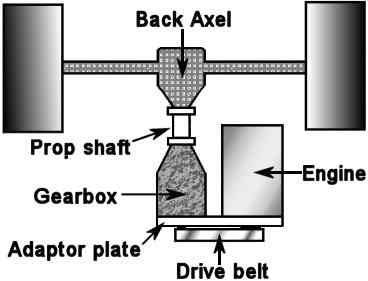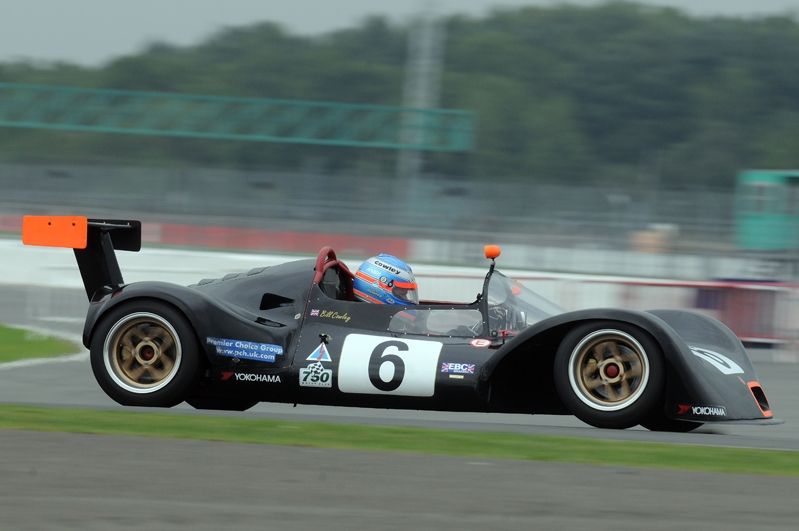
Hi all I'm currently building a locost and am considering powering it with a fire blade engine and possibly fitting a
ford rocket box inline in the transmission tunnel with the bell housing removed.Has anyone tried this?my thoughts are if it works I will have reverse
gears and 4 sets of ratios to run the bike gearbox through e.g. tall ratio for driving to track days( on motorway) then shorter ratios at the track
my thought is to fit a short prop from the output of the blade engine to the input shaft of the rocket box which will be rigidly mounted in the tunnel
like you would with a reverse box and then another short prop/donut to the rear diff.
anyone tried it ? or whats your thoughts.
cheers rob
I know it's been done in a mid engine car. A GTM Libra with the bike engine mated to a PG1 gearbox. I'm not sure what happened to it in the
end or if it worked well. He was having problems last I heard.
Didn't the Light Car Company Rocket use both bike and car gearboxes?
Any way I don't think the extra weight and trouble making it work would be worth it.
You could always use bigger wheels on road than track? :-)
quote:
Originally posted by rdodgerDidn't the Light Car Company Rocket use both bike and car gearboxes?


If you were going to do that wouldn't it be better to use an Audi FWD transaxle at the back which would eliminate the need for a separate diff and so not add as much weight as just adding a whole extra gearbox. It's something I have thought of doing anyway.
The Audi transaxle's a big heavy bast*rd, though - kind of defeats the object of using a bike engine?
Maybe the Imp gearbox (very light, and should be adequate for the limited torque of a bike engine), or perhaps a 2CV gearbox, would be a better
bet?
how about the Porsche 924/944 transaxle??
quote:
Originally posted by r1_petehow about the Porsche 924/944 transaxle??
quote:
Originally posted by Sam_68
The Audi transaxle's a big heavy bast*rd, though
quote:
Originally posted by Doctor Derek DoctorsAny facts or figures of weight comparisons to support the statement?

I will admit at this point not being a bike engined cars biggest fan, just too focussed for road use in my very brief experience of one but they do
look brilliant fun on track days.
Having said that I always thought that one of the great advantages of the BEC was the free (6 speed?) dog box you got with every bike engine.
To make a BEC car heavier by fitting a car gear box and then saddling it with only 4 gears would surely make it far less fun than it should be (and at
great expense and trouble). The power band of a bike engine dictates it needs more gears to keep it in the rev range, in a car the engine is pulling
more weight and needs those gears even more.
Why do you need a reverse gear, a Seven is not that heavy to push on the odd occasion you need to go backwards, neither of my acquaintances with BECs
bother with a reverse.
Why reinvent the wheel, simply do what every builder of a BEC car I have met in the past has done in the past, use the free bike gearbox.
As an aside when I was hillclimbing bike engined single seaters became ever more popular. Of all the cars I encountered only one varied from the norm
of transverse engine with bike gearbox with a chain drive to a diff. This chap, at great expense, mounted the bide engine longitudinally onto a type 9
Hewland. Did it give him an advantage, well it looked nice.
quote:
Originally posted by Paul Turner...then saddling it with only 4 gears
quote:
Originally posted by Paul Turner...Why do you need a reverse gear, a Seven is not that heavy to push on the odd occasion you need to go backwards...
2 gearboxes, looks like a complicated solution to a problem that 1000's of BEC's have not needed to solve (other than fit one of the
troublesome reverse gearboxes).
Not only will it be heavier but with an extra gearbox in the car there will be a much greater power loss at the wheels and subsequent loss of
performance.
Don't forget that standard Ford gearboxes do not like revs over 7500. It kills 1st and 2nd gears where they run directly on the mainshaft with no
bearings. The HD kits from Quaiffe etc overcome this by fitting needle rollers on the mainshaft gears. Suppose you could do it with a standard box but
it would mean modifying the mainshaft and boring out the gears slightly and finding suitable bearings.
Most builders try and keep weight to a minimum and power loss to a minimum, the proposed solution ensures both will be maximised.
Crazy.
[Edited on 4/2/14 by Paul Turner]
Yes, I agree - with the caveat that thousands of BECs haven't needed to solve the problem because it didn't used to be a legal
requirement (with SVA), but it is now.
And like you, I'm not a big BEC fan, anyway.
Though to be fair there are only two 'legal' solutions to the question of a reverse gear: an electric drive, or a secondary reversing
box.
The Ford 'rocket' box is quite heavy, but the alternative of a custom-manufactured inline reversing box is quite expensive and I suppose
therefore not really in keeping with the 'Locost' ethos.
A lighter gearbox than the Rocket - possibly a Reliant gearbox with the bellhousing machined off and the redundant gears removed, fitted in the
transmission tunnel, or an Imp or similar transaxle fitted at the back, as has been done with Hewland transaxles on some car-engined Westfields -
might be a cheap alternative?
I've seen the Reliant gearbox quoted as weighing 15kg, on these forums (and I can probably believe that - it's certainly very light)
so with the bellhousing machined off and the redundant gears/selector forks stripped out, it might not be too bad.
There's an interesting web page here, showing the modification of a Reliant box to remove the bellhousing:
http://www.stotfoldengineers.co.uk/stotfold_engineering_blog/2011/02/01/1920s-clyno-gearbox-made-from-a-reliant-gearbox/
Whether it would stand the torque and revs of a Fireblade engine for more than a few minutes is another matter...
[Edited on 4/2/14 by Sam_68]